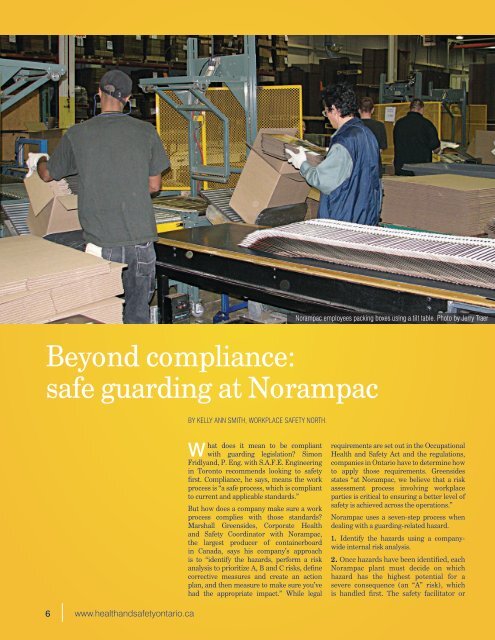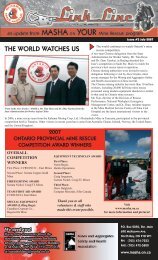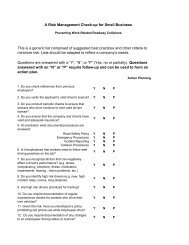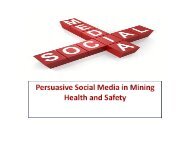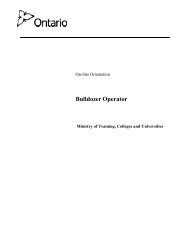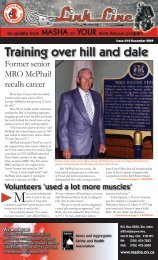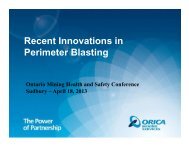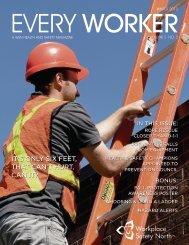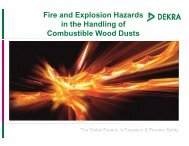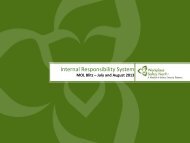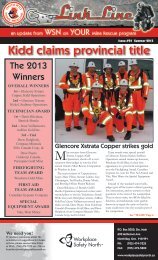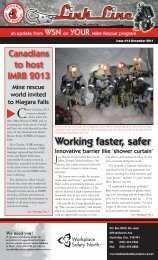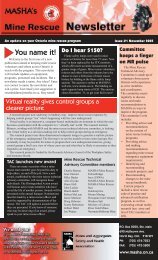a conveyor guard may have saved his life - Workplace Safety North
a conveyor guard may have saved his life - Workplace Safety North
a conveyor guard may have saved his life - Workplace Safety North
You also want an ePaper? Increase the reach of your titles
YUMPU automatically turns print PDFs into web optimized ePapers that Google loves.
Beyond compliance:<br />
safe <strong>guard</strong>ing at Norampac<br />
6 www.healthandsafetyontario.ca<br />
BY KELLY ANN SMITH, WORKPLACE SAFETY NORTH.<br />
What does it mean to be compliant<br />
with <strong>guard</strong>ing legislation? Simon<br />
Fridlyand, P. Eng. with S.A.F.E. Engineering<br />
in Toronto recommends looking to safety<br />
first. Compliance, he says, means the work<br />
process is “a safe process, which is compliant<br />
to current and applicable standards.”<br />
But how does a company make sure a work<br />
process complies with those standards?<br />
Marshall Greensides, Corporate Health<br />
and <strong>Safety</strong> Coordinator with Norampac,<br />
the largest producer of containerboard<br />
in Canada, says <strong>his</strong> company’s approach<br />
is to “identify the hazards, perform a risk<br />
analysis to prioritize A, B and C risks, define<br />
corrective measures and create an action<br />
plan, and then measure to make sure you’ve<br />
had the appropriate impact.” While legal<br />
Norampac employees packing boxes using a tilt table. Photo by Jerry Traer<br />
requirements are set out in the Occupational<br />
Health and <strong>Safety</strong> Act and the regulations,<br />
companies in Ontario <strong>have</strong> to determine how<br />
to apply those requirements. Greensides<br />
states “at Norampac, we believe that a risk<br />
assessment process involving workplace<br />
parties is critical to ensuring a better level of<br />
safety is achieved across the operations.”<br />
Norampac uses a seven-step process when<br />
dealing with a <strong>guard</strong>ing-related hazard.<br />
1. Identify the hazards using a companywide<br />
internal risk analysis.<br />
2. Once hazards <strong>have</strong> been identified, each<br />
Norampac plant must decide on which<br />
hazard has the highest potential for a<br />
severe consequence (an “A” risk), which<br />
is handled first. The safety facilitator or


